投稿日:2025年04月20日
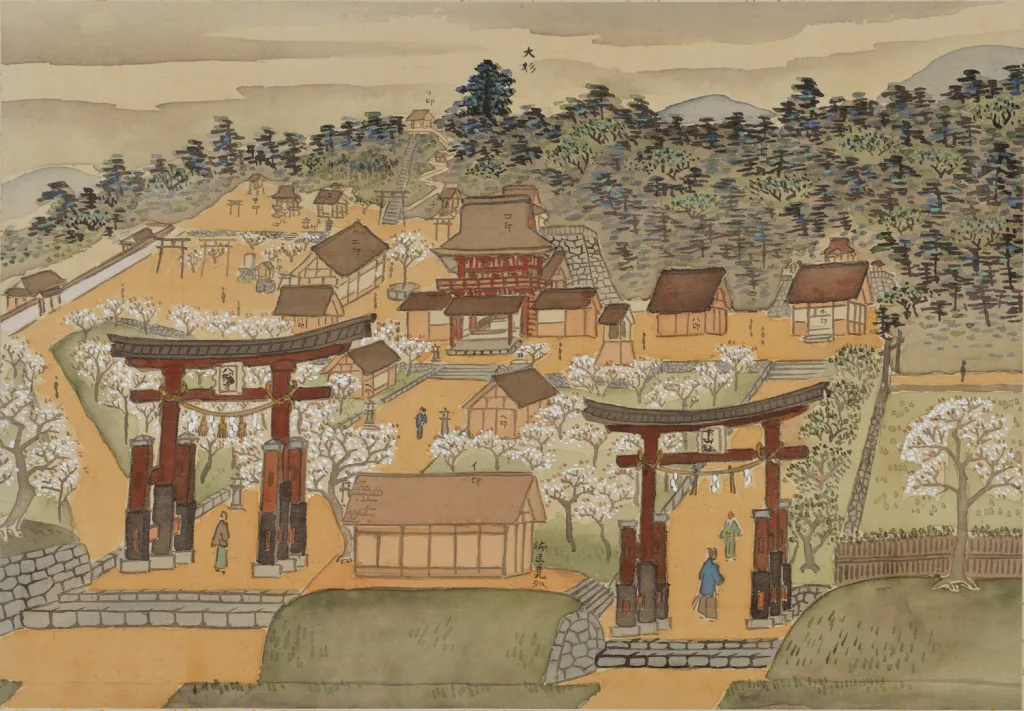
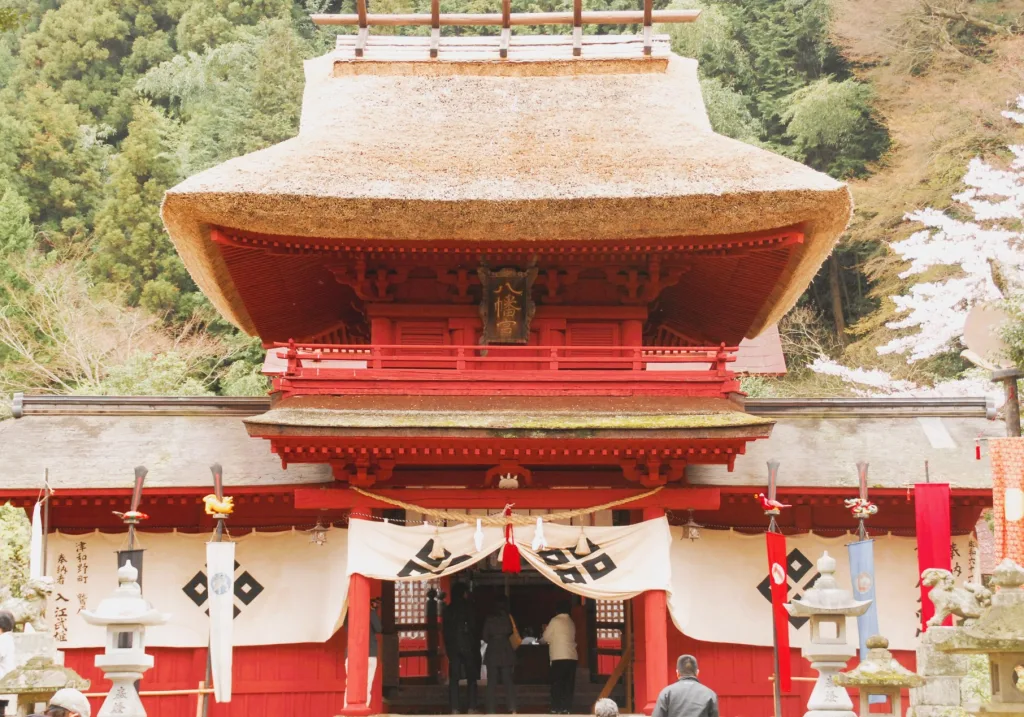
The Washibara Hachimangu Shrine was first built in the Kibe district in Tsuwano, by a local samurai in 950 AD.
In 1282, the founder of the Tsuwano domain, the Yoshimi clan, brought the deity Hachiman from Tsurugaoka Hachimangu Shrine in Kamakura (located in present day Kanagawa Prefecture).
Then in 1387, the same year as the completion of Tsuwano Castle, the 3rd generation of the Yoshimi clan, Yoshimi Naoyori, relocated both Hachiman and Washibara Hachimangu Shrine to the present location, at the foot of Mt. Shiroyama.
During the attack on Tsuwano Castle by Sue Harukata in 1554, the shrine was burned down and according to legend, was rebuilt in 1568 by master carpenters from the Takeda family in Kyushu.
Thus the Main Hall is the oldest existing Shinto structure in Shimane.
The Prayer Hall and the Two-Storied Gate were built later during the late Muromachi period and allow us to see the architectural characteristics of the time.
These 3 structures were designated as Important Cultural Properties of Japan in 2011.
Later, in 1711, major renovations were carried out under Kamei Korechika, the lord of Tsuwano Castle, including the construction of the Worship Hall (Haiden).
The shrine grounds face south, with the Main Hall (Honden), Worship Hall, and Tower Gate (Rōmon) aligned in a straight line. A pond lies between the Worship Hall and the Tower Gate, spanned by a Purification Bridge used for ritual cleansing. The Main Hall stands on a stone foundation and is connected to the Worship Hall by a flight of stone steps.
As depicted on the Tsuwano Hyakkeizu, to the right of the Main Hall was the Shimoyama Shrine, which was moved to this site by the Kamei clan. With the end of the Edo era (1600~1868) and start of Meiji (1868~1912), the clan moved to Tokyo in 1871, and at this moment the shrine was relocated to Maruyama Park in Nakaza District, Tsuwano.
Other notable structures in the painting include the Umamidokoro (a traditional horse training and racing ground), Mokubado Hall, Tsuyado Hall, Gakudo Hall, Itsukushima Shrine, Konpira Shrine, Tenmangu Shrine, Awashima Shrine, and Sagi Daimyojin.
Due to the restoration work of Washibara Hachimangu Shrine that started in 2023, the Hachiman Deity has been temporarily moved to the Kaguraden, the Sacred Hall located on the left side of the shrine.
Restoration work is scheduled to be completed in 2030.
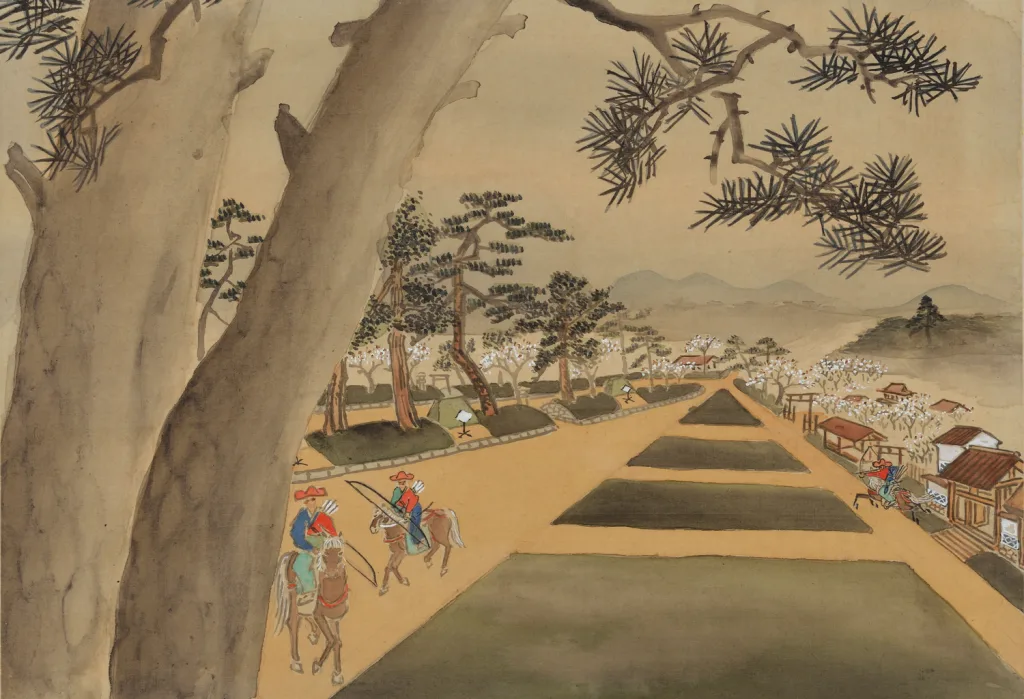
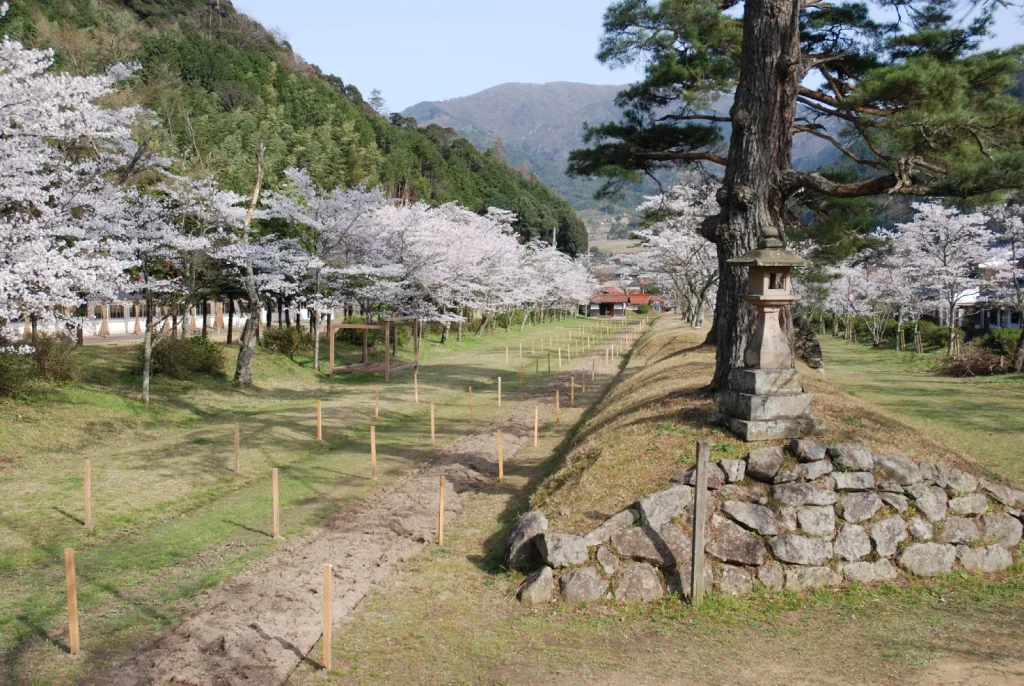
South of Washibara Hachimangu Shrine lies the riding grounds, where the traditional horseback archery, Yabusame Ritual, is held every year on the first Sunday of April, during the cherry blossom season. These grounds were constructed in 1568 by Masayori Yoshimi, the 9th head of the Yoshimi clan. They were modeled after the riding grounds of Tsurugaoka Hachimangu Shrine in Kamakura, Kanagawa Prefecture—the original home of the Hachiman deity.
Uniquely built specifically for Yabusame, the Washibara riding grounds are the only ones in Japan that retain the original layout from the Kamakura period (12th century). Because of this historical significance, both the riding grounds and the shrine grounds were designated as Important Historical Sites by Shimane Prefecture in 1966.
The grounds measure 235 meters in length and 23 meters in width, featuring a central mound where three targets are placed. Unlike most other riding grounds, the course is laid out perpendicular to the shrine.
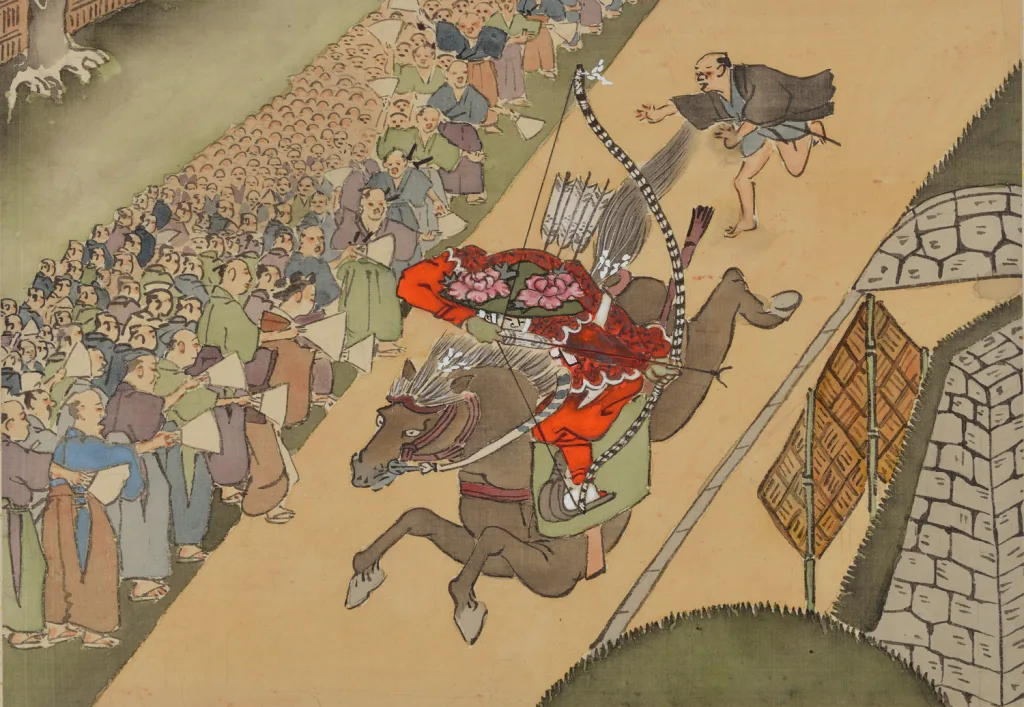
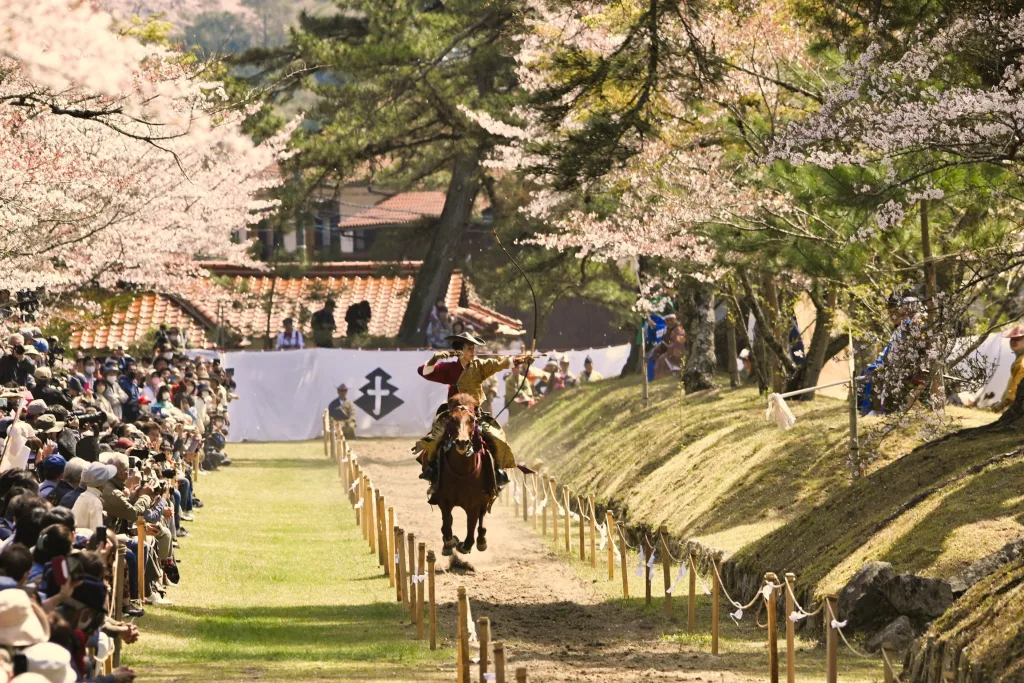
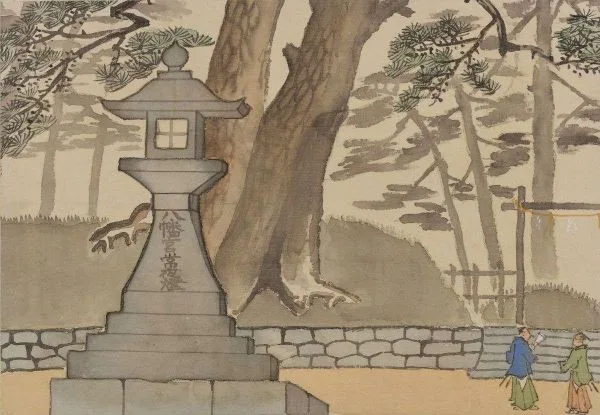
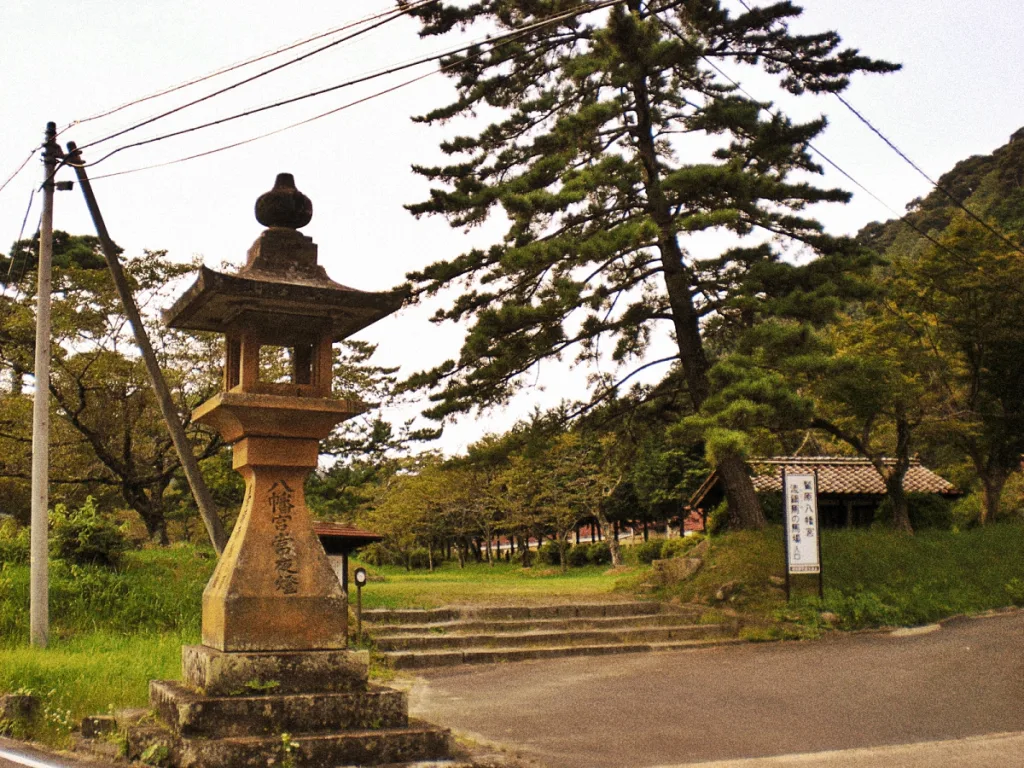
At the entrance to the Washibara riding grounds stands a large stone lantern. According to the inscription on the lantern, it was donated by the captains and foot soldiers of the Kijyu and Kamiichi groups.
If Kakusai (the painter of the Tsuwano Hyakkeizu) knew the lantern had survived to this day, he would surely be delighted.
Years later, when plans emerged to widen the road in front of it, the townspeople took great care to preserve both the lantern and the surrounding road, ensuring this historical landmark remained intact.
Adding to the ancient heritage of Washibara Hachimangu Shrine, visitors can find the Sennen-sugi (千年杉), or “Thousand-Year Cedar,” behind the shrine, partway up the mountain within the former Tsuwano Castle grounds. This sacred tree has stood watch over Tsuwano for more than a millennium. Atago Shrine once stood beside it, but although the shrine has long since disappeared, the great cedar remains.
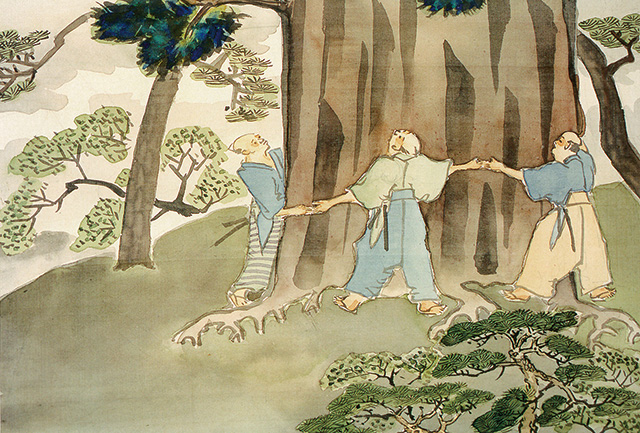
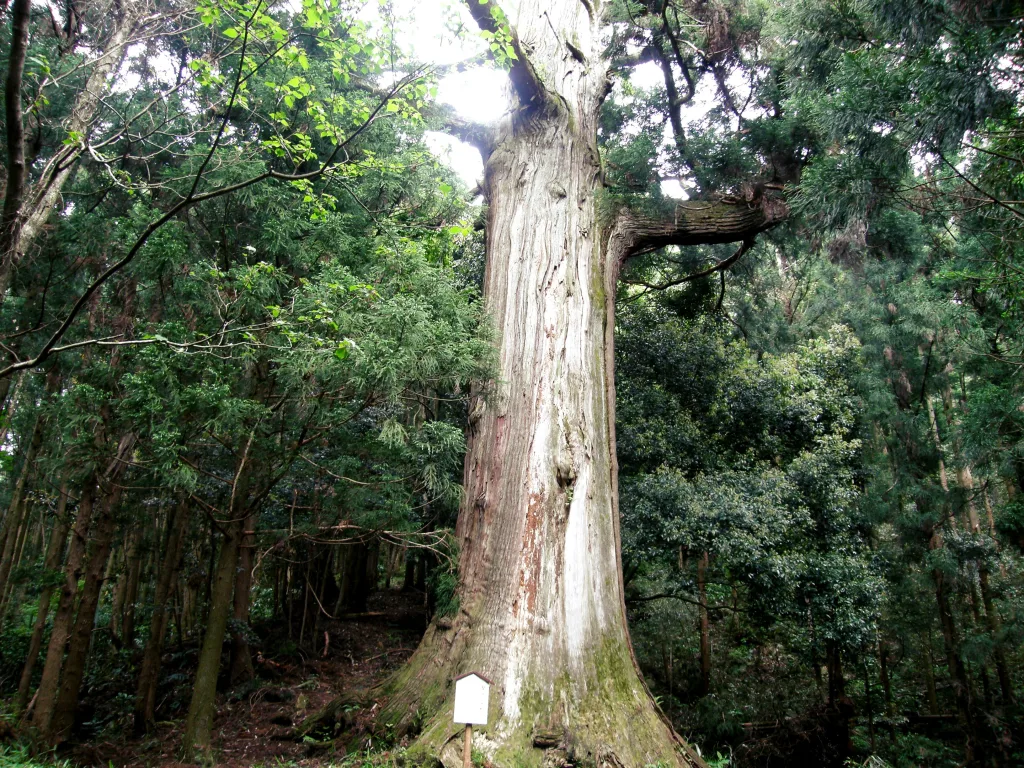
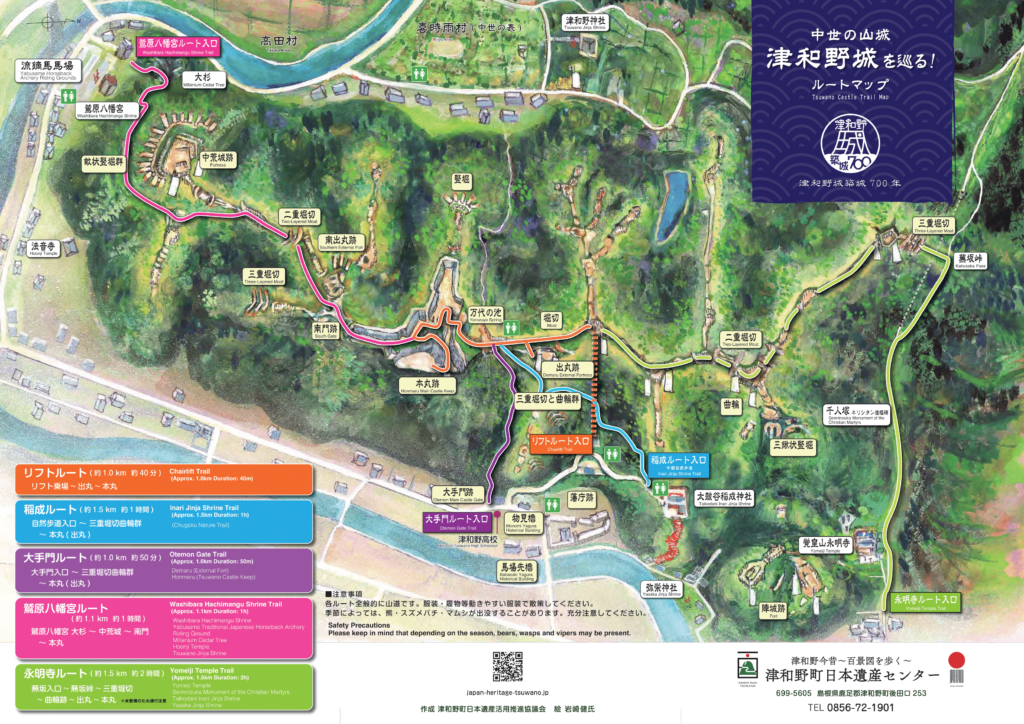


The cherry trees of Washibara once bloomed beautifully among the pine trees lining the embankment, creating a beloved viewing spot for local residents. Though the author is unknown, someone once wrote:
“Washibara is famous for its cherry blossoms when spring is in full bloom. The blossoms are so beautiful, just like thin, pink silk kimonos.”
An old local folk song also celebrates the area’s long tradition of flower viewing, with the line:
“Whether Terada or Washibara, flower viewing in ancient Yayoi times was a pleasant time of idleness and intoxication.”
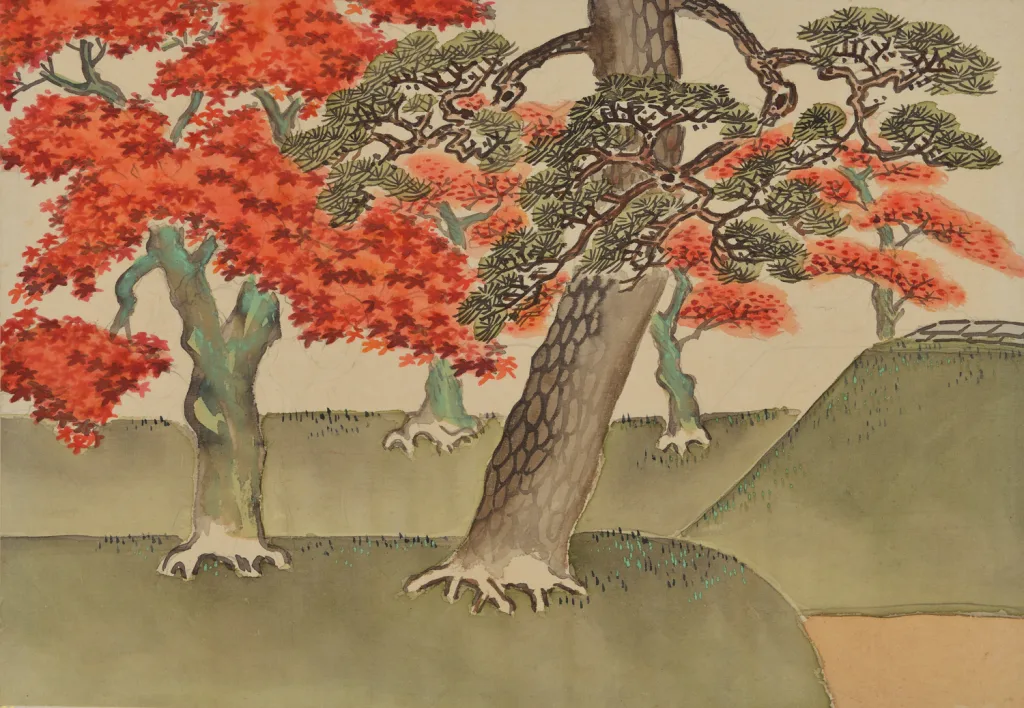
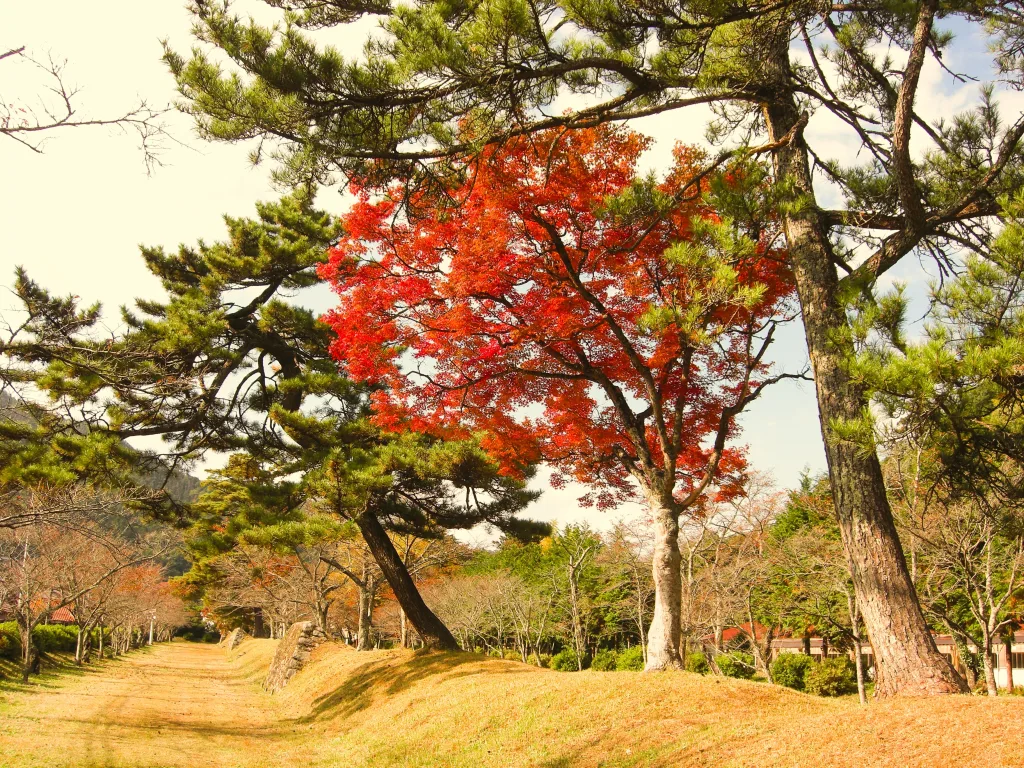
This maple tree stands among large pine trees on the embankment at Washibara, with its branches mingling with those of nearby cherry trees. In the past, when autumn came, the maple and cherry leaves would turn red as if competing with each other, creating a breathtaking scene.
Even today, when autumn arrives, the maples, ginkgo trees, and others display their colors, offering the same beautiful autumn atmosphere as in the past.
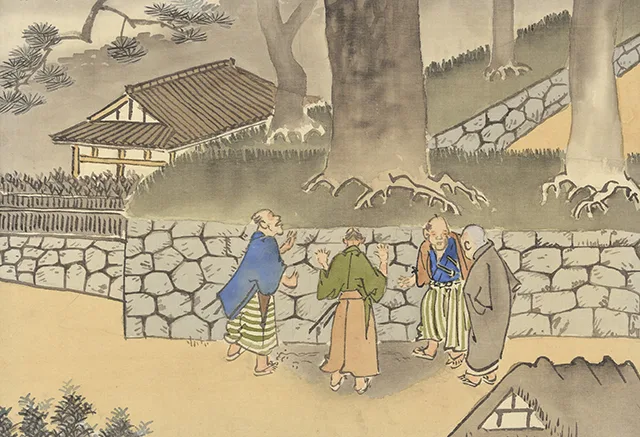

The old pine tree located on the outer embankment of the Washibara Horse Grounds is known as the Shigure-matsu (Drizzle Pine). It was said that the ground beneath this tree would stay dry on rainy days and become damp on sunny days. Because of this curious phenomenon, it was considered one of the “Seven Wonders of Washibara.”
What could possibly explain this strange phenomenon?
In the painting, three samurai and a monk are depicted engaged in conversation, seemingly discussing this very mystery. Could that monk possibly be Kakusai (the painter of Tsuwano Hyakkeizu) himself?
One can almost imagine a voice remarking:
“There is nothing particularly mysterious about it. The pine tree is simply too large. Its thick branches prevent rain from reaching the ground beneath. However, once the ground does become wet, it receives little to no sunlight, making it slow to dry. That is all there is to it.”

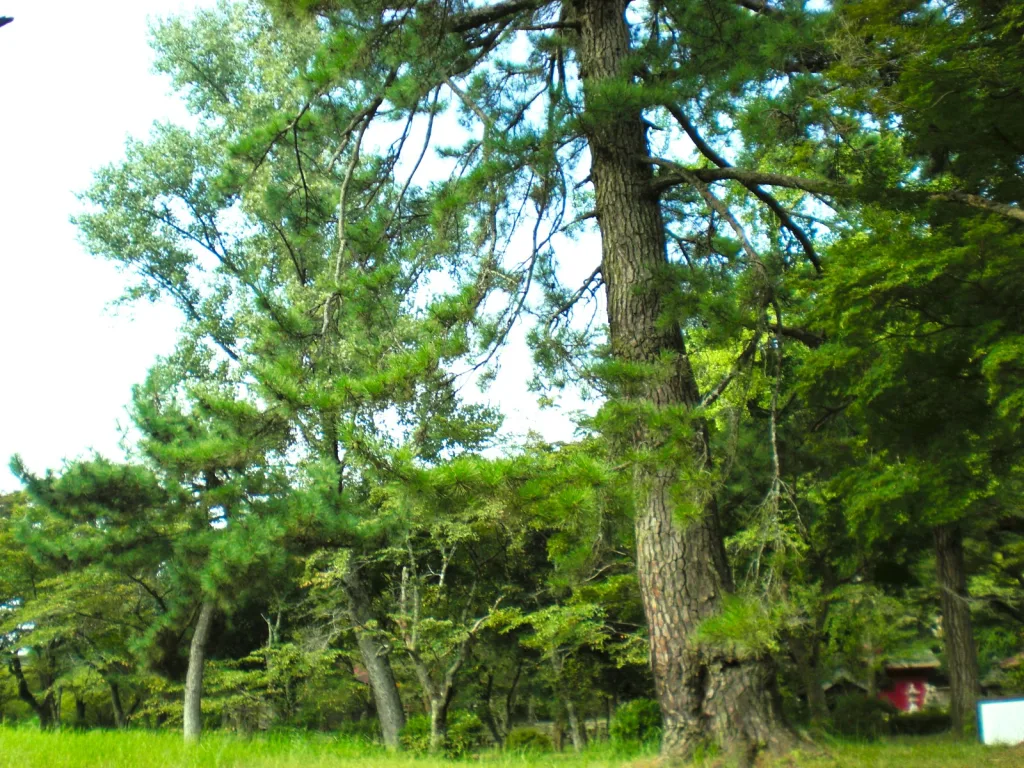
At the center of the Washibara Horse Grounds, there once stood a large pine tree. Although it had numerous branches, only one branch on one side bore dense foliage. Due to this unusual characteristic, it came to be known as the Kataeda no Matsu, or “Lone-Branch Pine.”
This tree was also regarded as one of the “Seven Wonders of Washibara.”
Initially, we assumed it was simply a pine tree with particularly vigorous growth on one side—a phenomenon not uncommon in nature. Indeed, there are many such examples. For instance, the pine tree along the riverbank near Yasaka Shrine displays this asymmetry beautifully. One side faces north and receives little sunlight, while the other faces south and benefits from both direct sunlight and the reflection off the river’s surface. The conditions on the southern side allow for unrestrained growth, resulting in a splendid example of a one-sided pine.
However, the pine at Washibara was different. It possessed only one branch, located on one side, bearing dense foliage—which is what made it truly mysterious.
Incidentally, neither this pine nor the previously mentioned Shigure Pine exists today.
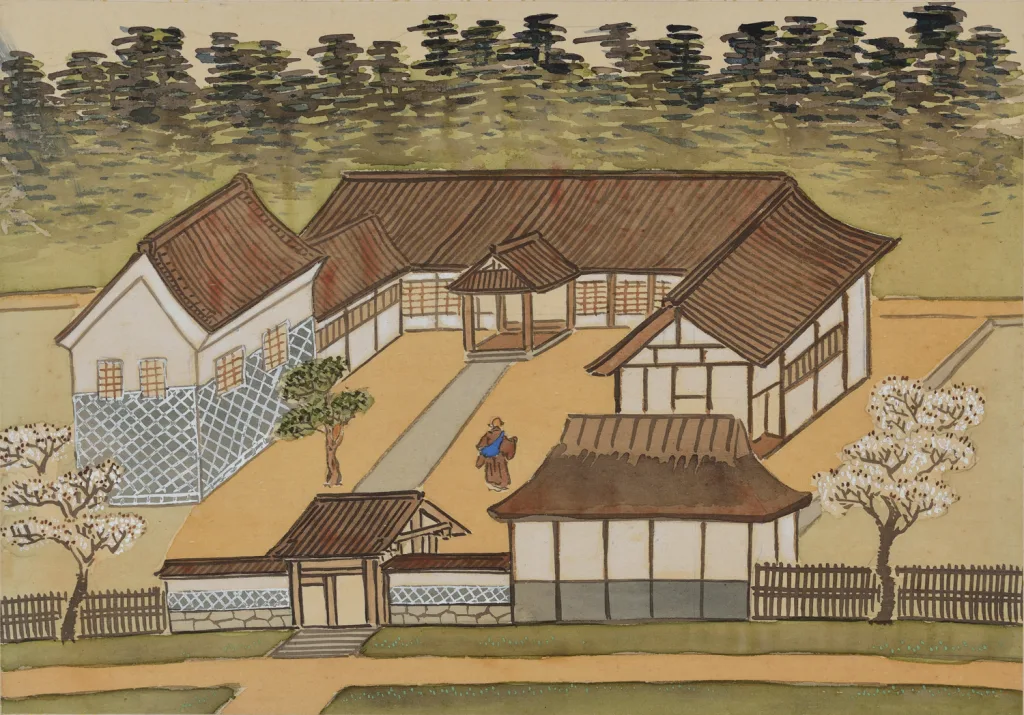
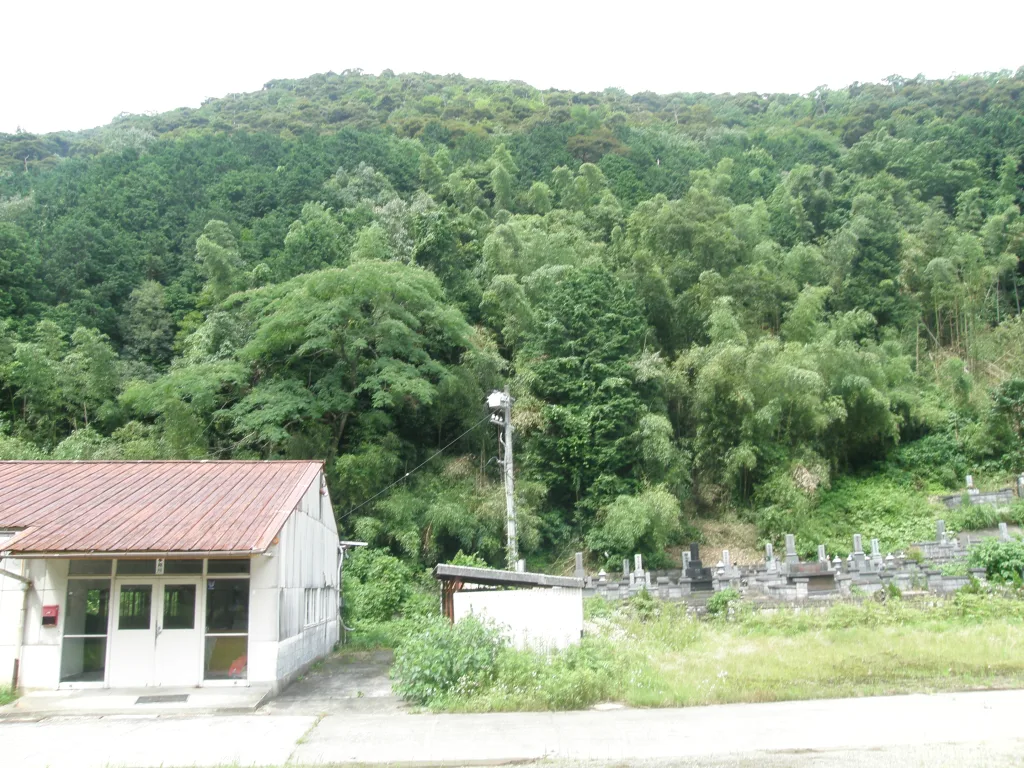
Historical records indicate that Kōei-ji Temple was established in 1387, when Yoshimi Masayori, the feudal lord of Tsuwano, invited the deity Hachiman from Tsurugaoka in Kamakura (present-day Kanagawa Prefecture). He also appointed resident monks to serve at the temple. At that time, the syncretism of Shinto and Buddhism—known as shinbutsu shūgō—was widely practiced. It was entirely common for temples to be located within the grounds of a Shinto shrine, and for Buddhist monks to act as shrine caretakers—an arrangement that would seem unusual today but was then a standard part of religious life.
During the Edo period, under the rule of the Kamei clan in Tsuwano, Kōei-ji Temple was dedicated to the spirits of successive Tokugawa shoguns, and it became customary for the domain lord to pay his respects there on the 6th of each month.
Judging from the painting, the temple appears to have been quite grand—possibly with a shikidai-style entrance (a raised entryway). A lord arriving by palanquin would have been able to enter directly without setting foot on the ground or putting on footwear.
By the time the Tsuwano Hyakkeizu was painted (in the early 20th century), Kakusai noted that the temple had already been abandoned and the site left vacant.

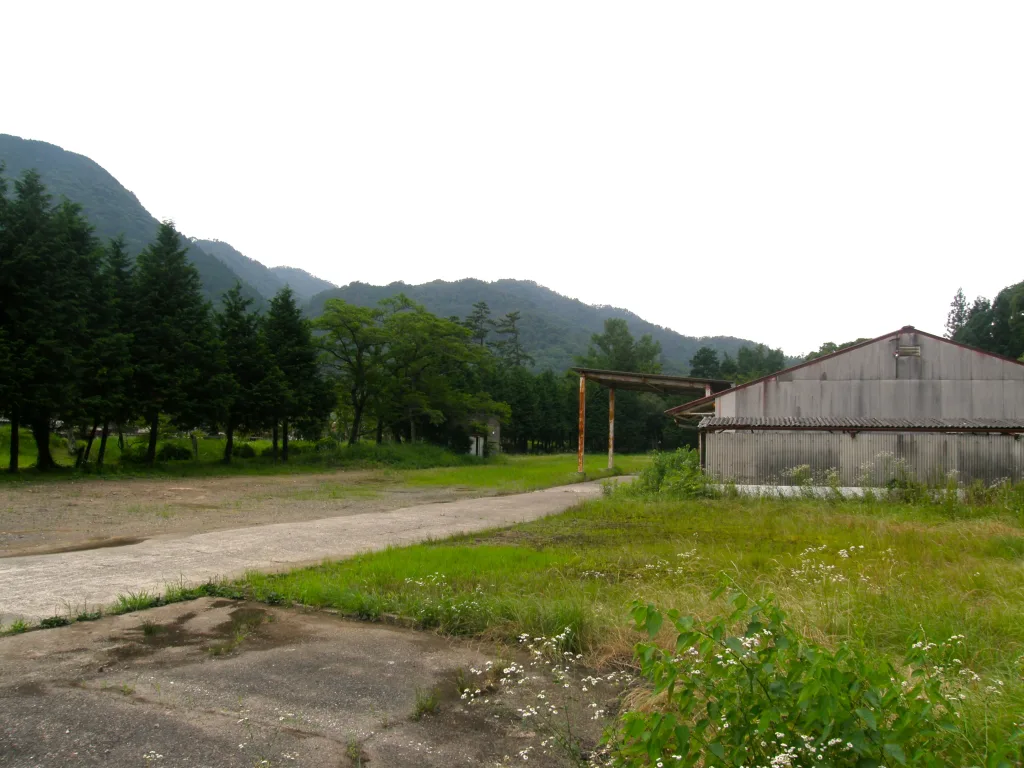
The retirement quarters of Koeiji Temple were situated just beyond the northern edge of the Washibara riding grounds, at the foot of the castle mountain, near Sandaishi Temple—known today as Koonji Temple. An elderly monk who resided there during the Ansei era (1854–1860) was renowned for his exceptional skill in calligraphy.